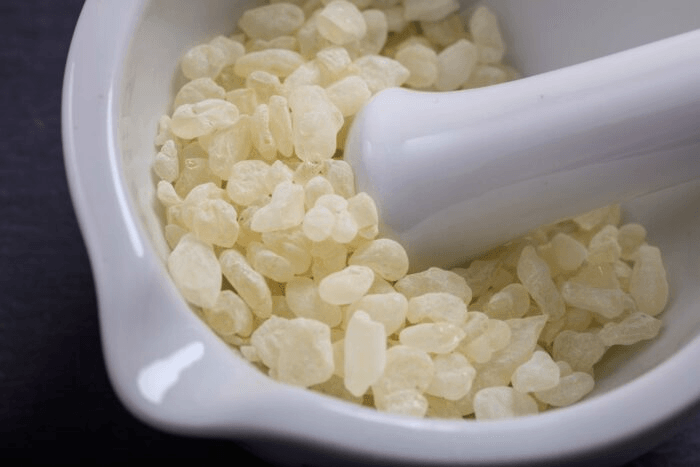Are you in the know?

You have been walking since taking your first steps as a young child. It is such a basic and natural part of what you do that maybe you haven’t considered the numerous benefits of incorporating a simple 30-minute walk into your daily routine. A good brisk walk not only positively impacts you physically but has a metal and emotional health component as well. The “technology takeover” has resulted in a more sedentary lifestyle for most of us…working at the computer, replying to texts, and streaming movies on our big screen tv. Given that, planning for time to walk 30 minutes every day can balance out the effects of all that time we spend sitting.
Walking not only fits everyone’s budget, requires no expensive sports equipment, and has not been shut down due to COVID like gyms and yoga classes, but it can also afford a wonderful social aspect as well, when taking a stroll and catching up with friends real time. Almost a guilty pleasure by today’s standards, particularly now with social distancing. If you think walking is a waste of time, think again. Did you know, there are no less than 30 benefits associated with daily walks?! Here are the first 10…1. A Healthy Heart
Your heart is a muscle, and just like all the other muscles in our body, it needs a workout to enhance your health. Cardio exercise is quantified as physical activity that increases your heart rate; which is the number of times your heart beats per minute. Your resting heart rate also known as your pulse rate, will thus be lower than your heart rate during exercise, as your heart pumps faster to send oxygen to all those working muscles.
Therefore, the best way to exercise your heart is by engaging in activities that increase your heart rate. Regular cardio exercise will strengthen your heart muscle. The stronger your heart, the more efficient it will be in delivering blood and oxygen throughout your body.
2. Maintaining Joint Mobility
Stiff joints causing discomfort while in motion, oftentimes leads to immobility, in a logical pain avoidance strategy. This is turn can lead to weight gain which only serves to exacerbate joint pain further, not to mention snowball into a myriad of other health issues. Having stiff joints does not have to preclude you from enjoying daily walks. However, if you have suffered with joint stiffness or pain, particularly in the knees and hips, it is always best to consult your physician prior to increasing physical activity to rule out any issues that may need to be addressed first. Doctors often recommend walking because it is a low-impact cardio workout, compared to running, a high-impact form of exercise, the latter can only serve to aggravate joint discomfort. If physical therapy is required to diminish joint tenderness, walking is often incorporated into the program for its known relief in minimizing chronic pain.
3. Strengthening Bones
Aging can bring with it, a decrease
in bone density, which is the amount of bone mineral present in your bones. Loss
of bone density leads a condition known as osteopenia and then to osteoporosis,
a more severe form of bone loss. Exercise helps to retain your bone mass. For
those who have been more sedentary, the best way to start is by one step at a
time…walking.
Stronger, more dense bones lower the chance of fractures and breaks, a complication of osteoporosis. Regular exercise not only improves bone density but also overall fitness and flexibility, which also serves to reduce injury.

How does Vitamin D promote healthy bones?
The bone builder mineral, Calcium, requires Vitamin D for proper absorption. Vitamin D assists the body in Calcium absorption and maintaining appropriate Calcium levels in the blood. Insufficient levels of Vitamin D cause Calcium to be released from the bones to help maintain blood calcium levels, which contribute to soft, brittle bones.
Boosting immune health...a timely C19 strategy
Our immune system is continually defending our body from foreign microscopic invaders. Research shows that low levels of vitamin D are associated with not only an increased susceptibility to infection but also reveals a link to multiple autoimmune diseases, including lupus, multiple sclerosis, and rheumatoid arthritis. Likewise it can be said that improving Vitamin D status, though supplementation, diet, and sun exposure, may have protective effects against autoimmune disease. How exactly does Vitamin D support our immune system? By stimulating immune cells, such as macrophages and T-cells, that defend the body against harmful pathogens. Several studies found a correlation between optimal Vitamin D levels and a decreased risk of upper respiratory tract infections, due to the protective effect of an increased expression of anti-microbial peptides in the lungs.

But here’s the spin…did you know that when our gut is unhealthy, it can have a huge impact on the condition of our skin? This connection is known as the “Gut-Skin Axis”. Skin is often treated exclusively from the outside (topically), but a more whole-istic approach, which is our methodology at SkinRevision, is to treat skin from the inside out…or as I like to say the SKINside® out!
I hear you asking, “Maxine, could gut health be the key to having flawless, radiant skin?” Yes! There is significant evidence to suggest an intimate, bidirectional connection between our gut health and the health of our skin, particularly with 4 common skin disorders: acne, atopic dermatitis, rosacea and psoriasis.

You have been walking since taking your first steps as a young child. It is such a basic and natural part of what you do that maybe you haven’t considered the numerous benefits of incorporating a simple 30-minute walk into your daily routine. A good brisk walk not only positively impacts you physically but has a metal and emotional health component as well. The “technology takeover” has resulted in a more sedentary lifestyle for most of us…working at the computer, replying to texts, and streaming movies on our big screen tv. Given that, planning for time to walk 30 minutes every day can balance out the effects of all that time we spend sitting.
Walking not only fits everyone’s budget, requires no expensive sports equipment, and has not been shut down due to COVID like gyms and yoga classes, but it can also afford a wonderful social aspect as well, when taking a stroll and catching up with friends real time. Almost a guilty pleasure by today’s standards, particularly now with social distancing. If you think walking is a waste of time, think again. Did you know, there are no less than 30 benefits associated with daily walks?! Here are the first 10…1. A Healthy Heart
Your heart is a muscle, and just like all the other muscles in our body, it needs a workout to enhance your health. Cardio exercise is quantified as physical activity that increases your heart rate; which is the number of times your heart beats per minute. Your resting heart rate also known as your pulse rate, will thus be lower than your heart rate during exercise, as your heart pumps faster to send oxygen to all those working muscles.
Therefore, the best way to exercise your heart is by engaging in activities that increase your heart rate. Regular cardio exercise will strengthen your heart muscle. The stronger your heart, the more efficient it will be in delivering blood and oxygen throughout your body.
2. Maintaining Joint Mobility
Stiff joints causing discomfort while in motion, oftentimes leads to immobility, in a logical pain avoidance strategy. This is turn can lead to weight gain which only serves to exacerbate joint pain further, not to mention snowball into a myriad of other health issues. Having stiff joints does not have to preclude you from enjoying daily walks. However, if you have suffered with joint stiffness or pain, particularly in the knees and hips, it is always best to consult your physician prior to increasing physical activity to rule out any issues that may need to be addressed first. Doctors often recommend walking because it is a low-impact cardio workout, compared to running, a high-impact form of exercise, the latter can only serve to aggravate joint discomfort. If physical therapy is required to diminish joint tenderness, walking is often incorporated into the program for its known relief in minimizing chronic pain.
3. Strengthening Bones
Aging can bring with it, a decrease
in bone density, which is the amount of bone mineral present in your bones. Loss
of bone density leads a condition known as osteopenia and then to osteoporosis,
a more severe form of bone loss. Exercise helps to retain your bone mass. For
those who have been more sedentary, the best way to start is by one step at a
time…walking.
Stronger, more dense bones lower the chance of fractures and breaks, a complication of osteoporosis. Regular exercise not only improves bone density but also overall fitness and flexibility, which also serves to reduce injury.

How does Vitamin D promote healthy bones?
The bone builder mineral, Calcium, requires Vitamin D for proper absorption. Vitamin D assists the body in Calcium absorption and maintaining appropriate Calcium levels in the blood. Insufficient levels of Vitamin D cause Calcium to be released from the bones to help maintain blood calcium levels, which contribute to soft, brittle bones.
Boosting immune health...a timely C19 strategy
Our immune system is continually defending our body from foreign microscopic invaders. Research shows that low levels of vitamin D are associated with not only an increased susceptibility to infection but also reveals a link to multiple autoimmune diseases, including lupus, multiple sclerosis, and rheumatoid arthritis. Likewise it can be said that improving Vitamin D status, though supplementation, diet, and sun exposure, may have protective effects against autoimmune disease. How exactly does Vitamin D support our immune system? By stimulating immune cells, such as macrophages and T-cells, that defend the body against harmful pathogens. Several studies found a correlation between optimal Vitamin D levels and a decreased risk of upper respiratory tract infections, due to the protective effect of an increased expression of anti-microbial peptides in the lungs.







